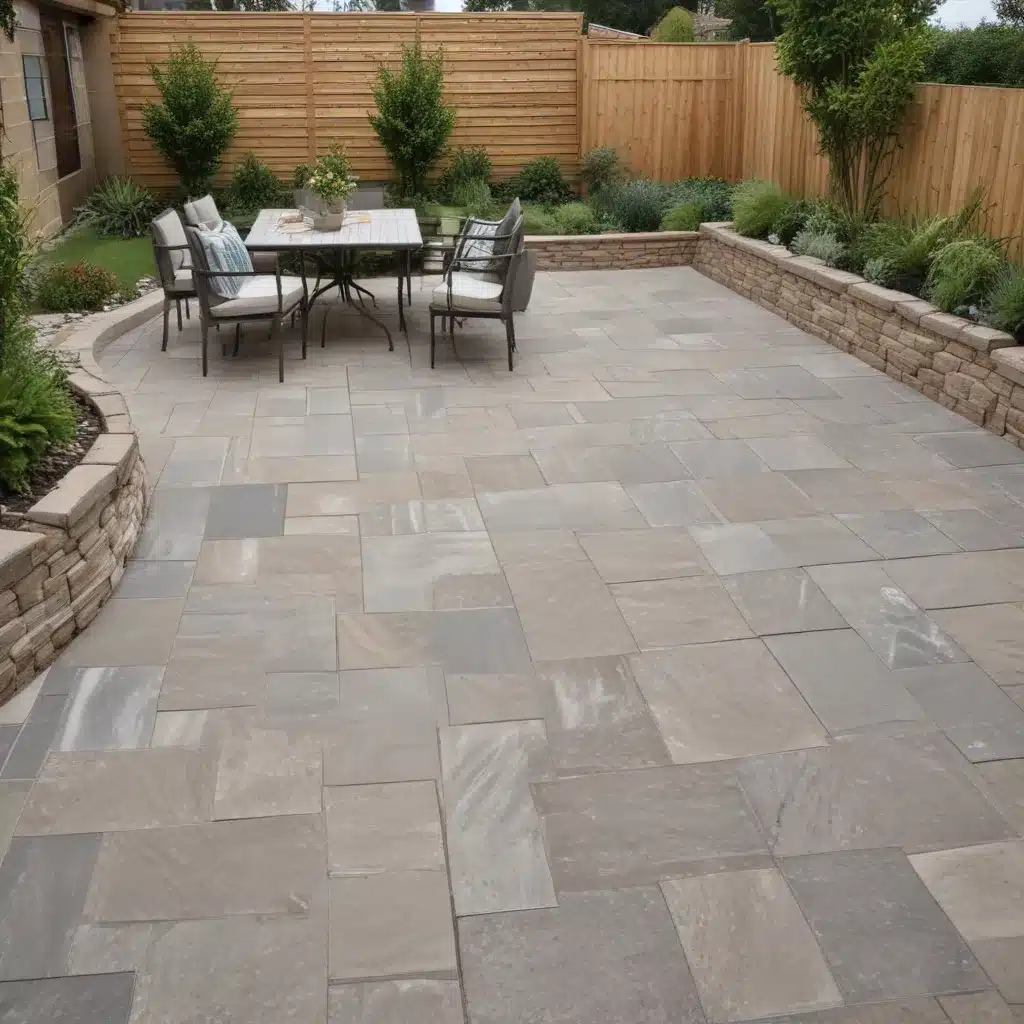
As an experienced outdoor living consultant for Cincinnati Patiopaving, I’m excited to share my insights on transforming your backyard into an exceptional open-air retreat. Patio paving offers a world of design possibilities, allowing you to seamlessly extend your living space and create an inviting oasis steps from your door.
Patio Paving Trends
Popular Paving Materials
When it comes to patio paving, homeowners have a wealth of materials to choose from, each with its own unique aesthetic and practical benefits. Brick remains a classic choice, offering a warm, timeless look that complements a variety of architectural styles. For a more contemporary vibe, concrete pavers in sleek, geometric patterns are growing in popularity. Natural stone, such as flagstone or travertine, can lend an elegant, high-end feel, while permeable pavers help manage stormwater runoff.
Emerging Patio Paving Styles
Beyond the standard square or rectangular layouts, patio design is embracing more dynamic, freeform shapes. Curved edges, herringbone patterns, and mixed material combinations create visual interest and a custom, tailored look. Integrated seating walls, fire pits, and water features further elevate the patio as a true outdoor living room.
Sustainable Paving Options
As homeowners increasingly prioritize eco-friendly solutions, patio paving has evolved to meet those demands. Permeable pavers allow rainwater to infiltrate the ground, reducing runoff and recharging groundwater supplies. Recycled materials like crushed glass, rubber, or reclaimed brick and stone offer a lower-impact alternative to new manufacturing.
Outdoor Design Ideas
Enhancing Curb Appeal
The patio serves as an extension of your home’s architecture, so thoughtful design is key to boosting curb appeal. Aligning the patio’s shape and materials with your house’s style creates a cohesive, visually striking outdoor space. Incorporating decorative paving patterns, like a medallion or border, can elevate the entire look.
Creating Functional Spaces
When designing your patio, prioritize how you want to use the space. Will it be a cozy conversation area with comfy seating? A lively entertaining hub with an outdoor kitchen? A serene retreat with a water feature? Defining the primary functions enables you to tailor the layout, furnishings, and amenities accordingly.
Integrating with Landscaping
Blending your patio seamlessly into the surrounding landscape takes the entire outdoor living experience to the next level. Strategically placed planters, trellises, or low walls can define the patio’s boundaries while enhancing the connection to nature. Incorporating drought-tolerant plants or ornamental grasses adds visual interest and softens the transition between hardscaping and softscaping.
Installation Techniques
Preparing the Patio Base
Proper patio base preparation is crucial for long-term structural integrity and drainage. Excavating the area, laying a compacted gravel or crushed stone base, and installing a weed barrier are essential first steps. Ensuring the base is level and well-drained will prevent settling and pooling.
Laying the Paving Stones
The paving stone installation process requires careful attention to detail. Aligning the stones in a visually appealing pattern, cutting around obstacles, and maintaining consistent joint spacing all contribute to a professional-looking finish. Using a rubber mallet to gently tap the pavers into place helps create a seamless, stable surface.
Ensuring Proper Drainage
Effective drainage is key to preventing water damage and maintaining the patio’s appearance. Incorporating a slight slope, installing French drains, or leveraging permeable paving materials can all help channel water away from the patio and foundation. Paying close attention to drainage during the planning and installation phases will save you headaches down the line.
Maintenance Guidelines
Cleaning and Sealing
Regular cleaning and sealing are essential for preserving the beauty and longevity of your patio. Sweeping away debris, power washing the surface, and applying a high-quality sealant every few years will protect the pavers from weathering, staining, and weed growth.
Repairing Damaged Pavers
Despite your best efforts, the occasional cracked or uneven paver is bound to occur over time. Fortunately, patio paving makes repairs relatively straightforward. Carefully removing and replacing the damaged piece, or using a paver-friendly adhesive to secure it, can restore the patio’s seamless appearance.
Preventing Weed Growth
Weeds can quickly overtake a patio, detracting from the polished look you’ve worked so hard to achieve. Applying a pre-emergent herbicide or spot-treating with a vinegar-based solution can help keep weeds at bay. Maintaining a tight joint spacing between pavers and filling the gaps with polymeric sand also discourages weed growth.
Cost Considerations
Budgeting for Patio Paving
The cost of patio paving can vary widely depending on the size, materials, and complexity of the project. As a general guideline, expect to pay between $10 and $30 per square foot for basic paving stone installations. More intricate designs, high-end materials, or custom features can push the price up significantly.
Comparing Material Costs
When budgeting for your patio, the paving material you choose will have a significant impact on the overall cost. Concrete pavers tend to be the most affordable option, while natural stone can be the most expensive. Recycled or eco-friendly paving materials often fall somewhere in the middle.
Factoring in Labor Expenses
In addition to the material costs, you’ll need to account for labor expenses when budgeting for your patio paving project. Professional installation typically ranges from $5 to $15 per square foot, depending on the complexity of the job and your local market rates. Opting for a DIY approach can save on labor costs, but requires a significant time investment and specialized skills.
By staying informed on the latest patio paving trends, design ideas, installation techniques, and cost considerations, you can transform your backyard into a showpiece that seamlessly extends your living space. For more information on patio paving and outdoor living solutions, be sure to visit cincinnatipatiopaving.com.

